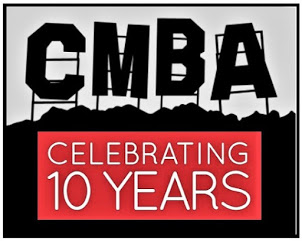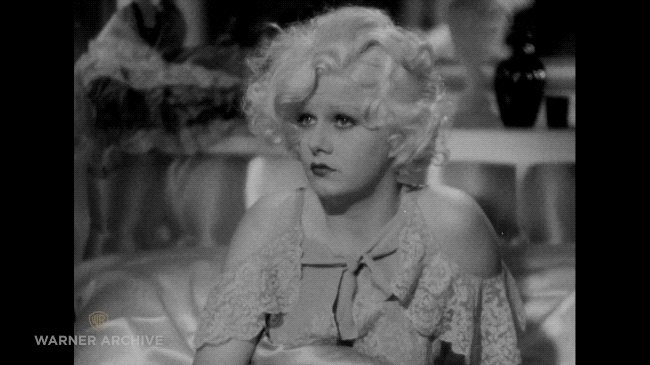
Bela Lugosi (centre) and Angelo Rossitto steal brides. Image: IMDb
“In early 1940s Hollywood,” writes Robert Guffey, “you had to go out of your way to descend any lower than Monogram Studios.”¹
Monogram was one of the small Hollywood studios – collectively known as Poverty Row – that produced low-budget “B” films. Monogram specialized in action and adventure; one of their stars in the early-to-mid 1930s was a young John Wayne.
Among the films Monogram released in the early 1940s, nine were made with former Hollywood legend, Bela Lugosi. Lugosi, best known for his portrayal of Dracula both on stage and in the 1931 film, was really Up Against It in life. In addition to his morphine addiction (the result of a WWI injury), he had a troubled personal life and was unable to expand his career beyond the horror genre. His time at Monogram screams Reduced Circumstances.
Lugosi made nine films at Monogram between 1941-1944, known today as “The Monogram 9”. In their study of these films, Bela Lugosi and the Monogram 9, authors Gary D. Rhodes and Robert Guffey quote film historians’ dismissals of these movies which include such ripe phrases as “barely adequate”, “tasteless” and “a professional embarrassment”.²
With titles like Voodoo Man (1944), Return of the Ape Man (1944), and The Corpse Vanishes (1942), you can’t blame a person for adopting a cynical view before seeing any of these movies.
However, the authors beg to Differ. As they analyze each film, they explore the philosophic subtexts and artistic merits lurking therein.
Like the Monogram 9, this book presents more than you might expect.

Bela Lugosi in Black Dragons (1942). Image: Mubi
Confession: We expected this book to be an irreverent, tongue-in-cheek look at 1940s B horror movies. What we didn’t expect was a scholarly-yet-amusing work that helped us dissect these films. We treated the book like a study guide: After watching each film, we read the analysis and became a fan of the Monogram 9.
For example, author Guffey explains “slipstream” film and says Bowery at Midnight (1942), could be one of the earliest examples in Hollywood cinema. Slipstream is defined as a genre that “crosses the divide between mainstream and speculative literatures of science fiction, fantasy and horror. … Physical laws are broken but no one wonders about them.”³
Or look at the analysis of Invisible Ghost (1941). Author Rhodes explores the issue of “controlling the space” in a scene, specifically the approach to closeups. “The result offers an uncomfortable series of closeups, one after the other, edited with straight cuts,” he writes, “resulting in a sequence that is somewhat outside of the norms of the classical Hollywood style.”4 He then labels each shot A through K, examines them, and tells us why they are important.
In other words, Rhodes and Guffey challenge us to read film and interpret it, not to be a passive observer.
They also ask the tantalizing question: “What is it about these low budget B-films that speaks to the twenty-first century mind?”5
Now, you may be asking if perhaps the authors read too much into the Monogram 9. Are they over-intellectualizing? After all, while discussing these B horror films, the authors delve into surrealism, syncretism, and the works of Stanislav Szukalski.
It’s possible, but we don’t think so. Their analyses help us see these movies – and Bela Lugosi as Actor – differently. What emerges is a portrait of a studio that may have been more savvy and experimental than we thought.
Whether or not you agree with their conclusions, these well-crafted essays will leave you a more knowledgeable film viewer and a Monogram 9 smarty pants.

Notes
- Rhodes, Gary D. and Robert Guffey. (2019) Bela Lugosi and the Monogram 9. United States: Bear Manor Media.
- ¹Ibid., p. 168
- ²Ibid., p. 13
- ³Ibid., pp. 141-142
- 4Ibid., pp. 27-28
- 5Ibid., p. 158
- You can order a copy of Bela Lugosi and the Monogram 9 HERE.
- Disclosure: Bear Manor Media sent us a copy in exchange for an unbiased review.











I love some of the old B movies. A guilty pleasure these days. 🙂
LikeLiked by 3 people
They’re pretty great, aren’t they? I’m glad you’re able to enjoy some of these old films from time to time.
LikeLiked by 2 people
Exactly.
LikeLiked by 1 person
Sounds like a great book, Ruth!
I think people who dismiss Monogram as a studio are misguided. While it’s true that some of the studio’s output was truly dreadful and a fair amount of it depressingly mediocre, some of their movies are great fun (because the cheapness of the production actually helps, or because it can be just as cheap to produce a good script as a lousy one, or whatever) and a lot fall into the category of “admirably achieved aims that were modest” (they set out to be adequately entertaining fillers, and that’s exactly what they delivered).
I’m quite tempted to try the Lugosi 9 now that I’ve read your piece. Many thanks!
LikeLiked by 1 person
The authors of the book would completely agree with you. They films certainly aren’t Big Budget offerings – some sets seem to get a lot of mileage from one film to the next, but tho cares? There was only one in the series I found dull, but the rest were well worth it. (Psst! All films available on YouTube.)
LikeLike
Psst! I know. 🙂
LikeLiked by 1 person
Horror has certainly come a long way since those days. Nonetheless, I find myself giving credit to a lot of these B-movies. Even if they didn’t always turn out well, there’s a real earnestness in a lot of them I think modern filmmakers could stand to take cues from.
LikeLiked by 1 person
I completely agree. The earnestness alone can make up for many things, no?
LikeLiked by 1 person
Hello Ruth. Do the authors think that these movies are good by accident or because the people who made them were far-sighted and talented?
LikeLiked by 1 person
That’s something they themselves wonder about. They say the interesting aspects of these movies may have been accidental, but they also argue that when you’re at the lowest studio in town, you can afford to be more experimental. They are quick to point out proven talent (eg Lugosi), but for the others…no one can say for certain.
LikeLiked by 2 people
My own feeling, for what little it’s worth, is that some of the Poverty Row directors were, like the film noir directors at other studios, adept at turning the minuscule budgets into a strength.
There must also have been the factor that, if you were stuck at Monogram on a poxy Monogram salary, you’d want each movie you made to be as good as humanly possible within the limitations, so that you had a decent portfolio to show to the studios you were trying to get a better job at. “Here’s what I can do on a budget of two Double-Whoppers (no cheese) and a glass of water.” 🙂
LikeLiked by 1 person
Oh my goodness, that opening quote is BRUTAL!
LikeLiked by 1 person
It really is. Sadly, Monogram was at the bottom of the Hollywood food chain.
LikeLiked by 1 person
It can be a very vicious food chain 😦 So glad their movies still get out there despite it all!
LikeLiked by 1 person
I always try to look for the creativity in the lower budget movies that I know I will find. However, I have yet to reach the level you mention in this book. I think this is something that must be added to my library. I enjoyed your review very much. Someday people will call us both “Monogram smarty pants.”
LikeLiked by 1 person
Haha! Of course, you already are a smarty pants.
LikeLiked by 1 person
Despite the sets that looked like they were about to collapse, the ludicrous scripts, non-existent direction, and sometimes wooden supporting casts, I really LOVE Bela’s Monogram movies simply because they gave Lugosi the chance to strut his spooky stuff. The Monogram 9 (along with PRC’s ‘The Devil Bat’) are among my favorite 40’s horror flicks. As for Monogram, they were also the home of the later Charlie Chan films (with fan favorite Mantan Mooreland) and my personal 40’s movie crush Gale Storm! Thank the Gods the studio allowed Bela to headline these low-budget monster classics!
LikeLiked by 1 person
You’re right about Bela Lugosi strutting his spooky stuff. I really enjoyed all his performances. If you had to pick one, what would be your fave in the Monigram 9?
LikeLike
Added the book to my list. RE-posted on twitter @trefology
LikeLiked by 1 person
Reblogged this on The Last Drive In and commented:
This is a though provoking article on the Monogram 9 — and Bela always deserves his due
LikeLiked by 1 person
Wow! Fantastic write-up!
Sounds like another I must add to my ever-growing TBR list. Thanks! (I think!) 🙂
LikeLiked by 1 person
Haha! It’s a terrific read. It took me a while to read it because I insisted on watching every movie first, before reading that particular chapter. It was a great learning (and entertaining) experience.
LikeLiked by 1 person
I love me some monogram. There’s poetry to be found on a trash heap. It is sad that so many Poverty Row filmmakers didn’t respect their own products. They treated their own films like trash. So everybody else did too and thought PR could never produce any quality.
I’ve never heard of the term Slipstream before. Thanks for telling me about something new. I wonder if the Monogram jewel Decoy could fall into that category, considering a dead man is brought back to life and nobody bats an eyelid.
LikeLiked by 1 person
Ha! I wonder! I’ve not seen Decoy, but I have heard about it. It sounds wonderfully bizarre, and maybe it does fall into the Slipstream category.
LikeLike
Monogram might have been at the bottom but someone wrote a book about them, and their films still live on. I love the term Slipstream–I need to look into that!
LikeLike
I’ve been a horror film buff since my youth, but the Monogram pictures just aren’t very good. The book sounds somewhat interesting and there’s nothing wrong with reading meaning into a movie that wasn’t intended. Hey, that’s art, I suppose!
LikeLiked by 1 person
The book is interesting. Even if a person doesn’t agree with it, it’s still a well-written and entertaining read.
LikeLike
A very astute analysis, I’m totally impressed. Thank you.
LikeLiked by 1 person
It’s a terrific book, if you ever get the chance to read it. It taught me a lot about film in general.
LikeLiked by 1 person
I want to check out this book now. Sounds interesting and I like Bela Lugosi films.
LikeLiked by 1 person
If you like Bela Lugosi’s films, I think you’d like this book. I hope you get the chance to read it. 🙂
LikeLike